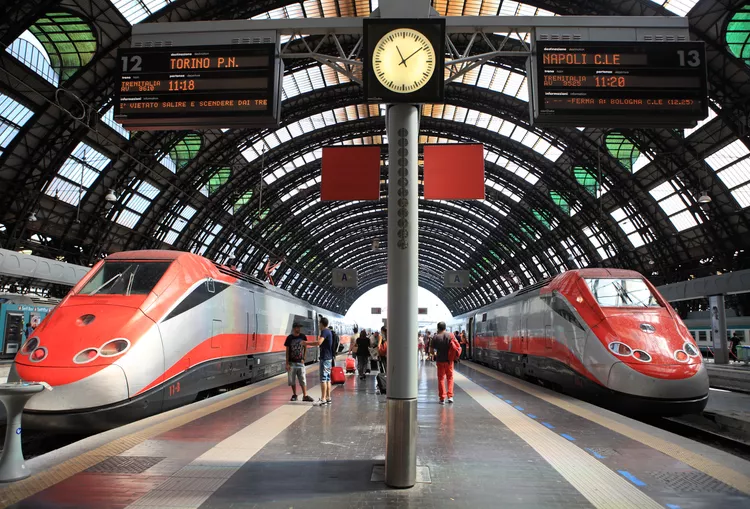Summary of Transportation in Italy
While Italy may be home to renowned car manufacturers such as Ferrari and Maserati, anyone who has had to drive and park in one of the country’s cities may not be eager to relive that experience. The public transport network in Italy is notably efficient, encompassing trains, buses, and ferry services along the coast. Utilizing public transportation can be a more relaxed and enjoyable way to explore Italy. Here’s a comprehensive look at Italy’s transportation options, highlighting how to plan your travels without the hassle of driving.
High-Speed Trains in Italy
For quite some time, Italian railways were known for their shortcomings in quality and punctuality. However, substantial investments in infrastructure and services have transformed the high-speed rail experience. Traveling between major cities on these high-speed trains is now often faster than flying. If you’re on a budget, local trains are also available, albeit requiring a bit more time. By booking in advance and utilizing online platforms, you can secure a seat on a high-speed train at an affordable rate.
For longer journeys, such as from Milan to Rome or Rome to Sicily, consider sleeper trains. They are safe, comfortable, and represent an excellent alternative to flying, saving you both time and the cost of additional accommodations.
The Local Train Network
While local trains may not match the speed of their high-speed counterparts, they offer an extensive network that reaches many areas across the country. These services are budget-friendly, and you can typically buy your ticket at the station and board the train. Unlike high-speed trains, local services don’t require reservations; however, during peak hours, seating may not always be available. Always remember to validate your ticket before boarding, using the self-service machines located on the platform.
Additionally, you can purchase regional travel passes that allow unlimited train travel within particular areas, providing an economical option for exploring a single region.
Buses in Italy
The bus network in Italy is expanding rapidly, with long-distance buses operated by companies like Megabus and Flixbus now offering fares throughout the country. While local bus systems may seem complex, local tourist offices can help you navigate routes and schedules. Tickets can be acquired from shops or automated machines at bus stations and should be validated once you board the bus. Inspectors do check for tickets, so ensure you have yours ready.
Boats And Ferry Routes in Italy
The Mediterranean and Adriatic seas provide numerous ferry routes to nearby countries, alongside services to popular Italian islands like Sardinia and Sicily. The busiest services typically operate from major ports such as Genoa, Livorno, and Naples. Various online resources, including the Traghetti website, help travelers identify different routes. Additionally, Italy’s scenic lakes—such as Lake Maggiore, Lake Como, Lake Garda, and Lake Iseo—feature local ferry services that are favored by sightseers for their stunning views.
Metro Networks In Italian Cities
Rome and Milan boast the largest metro systems in the country, but several other cities have integrated local transport networks to facilitate navigation. Cities like Turin, Naples, and Genoa also feature underground railways, complemented by bus and tram services. A significant advantage of these systems is the availability of multi-use tickets, which can be employed across various modes of transport. Ensure you validate your ticket to avoid fines from local inspectors.




